In spite of the many wars, foreign occupations, and civil strife that plagued Vietnam throughout the 20th century, the country has recently emerged as a unified tourist destination, complete with bustling modern cities, colonial towns, beach resorts, traditional villages, archaeological sites, and out-of-this-world islands.
Vietnam, a long, narrow country wedged between the South China Sea and the borders of Laos and Cambodia, is home to a wide variety of breathtaking natural features, from the verdant rice terraces and forested mountains of the north to the picturesque valleys of the central highlands and the fertile delta and beautiful beaches of the south.
Skyscrapers, pagodas, contemporary hotels, restaurants, museums, and nightclubs can all be found in Vietnam’s major cities, such as Ho Chi Minh City (Saigon), Da Nang, and the country’s capital, Hanoi. Hue and Hoi An are two of Vietnam’s oldest cities, and they both have royal palaces, imperial tombs, and colonial architecture. Trips to the mountains and the local hill tribes can be arranged from the charming town of Sapa in the country’s northernmost province of Laos.
Common sights in the Mekong Delta include rice fields, floating marketplaces, fruit orchards, and farmers wearing traditional conical hats. Nha Trang is a beautiful beach resort city that attracts many honeymooners and scuba divers. My Son has old ruins, and Ha Long Bay, with its ethereal mists, must be seen to be believed.
Halong Bay, one of Vietnam’s most visited destinations, is home to around 2,000 karst islands and jungle-covered islets. In Halong Bay, the sights will be breathtaking no matter what you choose to do.
Located in the Gulf of Tonkin in the country’s northeast, this magnificent harbor is home to quiet beaches and floating villages, as well as a plethora of breathtaking viewing sites, mystical caverns, and fun water activities. While certain areas of the “Bay of Descending Dragons” (as it is called in English) are quite popular, others are remote and unspoiled, making a trip around it a once-in-a-lifetime experience.
11. Ba Trai Dao Islets
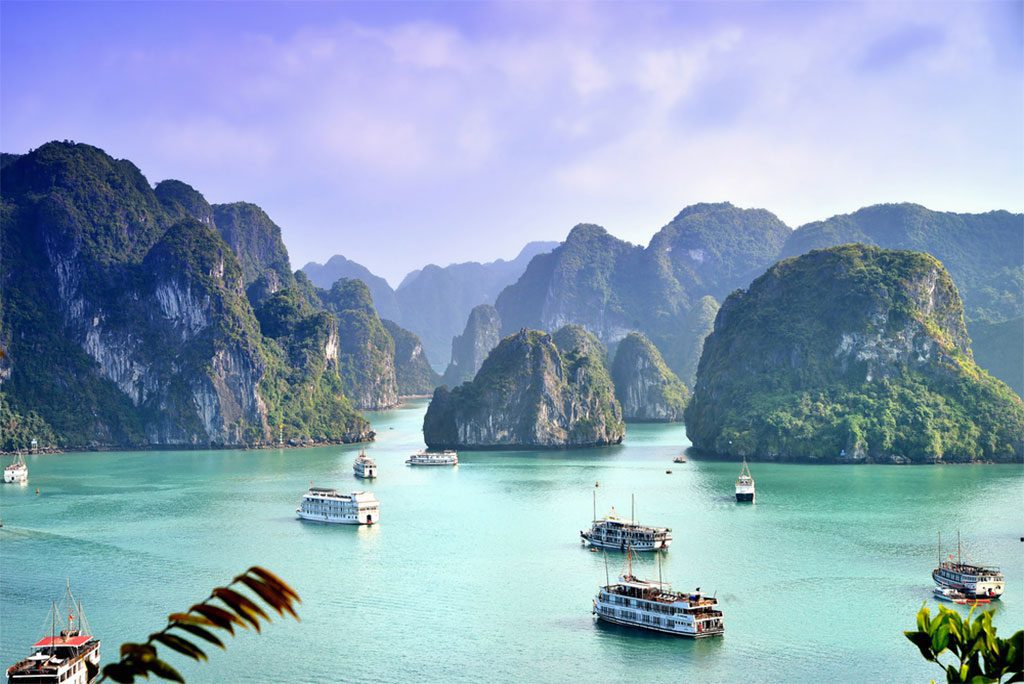
A stunning view of the karst landforms in the sea, a world natural heritage site – Halong Bay. Image source: sanyanwuji/Shutterstock.com
The Ba Trai Dao Islets, with their peculiar form, are one of the most famous sites in Halong Bay, rising suddenly from the turquoise waters. The three little islands were given their name, “the three peaches,” after a myth about a fairy who stole some peaches from heaven and gave them to a poor fisherman she had fallen in love with in exchange for his eternal life.
When the King of Heaven learned of this, he became so enraged that he transformed the peaches into the jagged mountains that stand before you now. That’s why the poor fairy never got to see her true love again.
The Ba Trai Dao Islets, not far from Cat Ba Island, include a beautiful rocky beach perfect for lounging. It’s hard to find a better feeling than swimming in clear waters surrounded by breathtaking landscape.
10. Hospital Cave (Cat Ba Island)
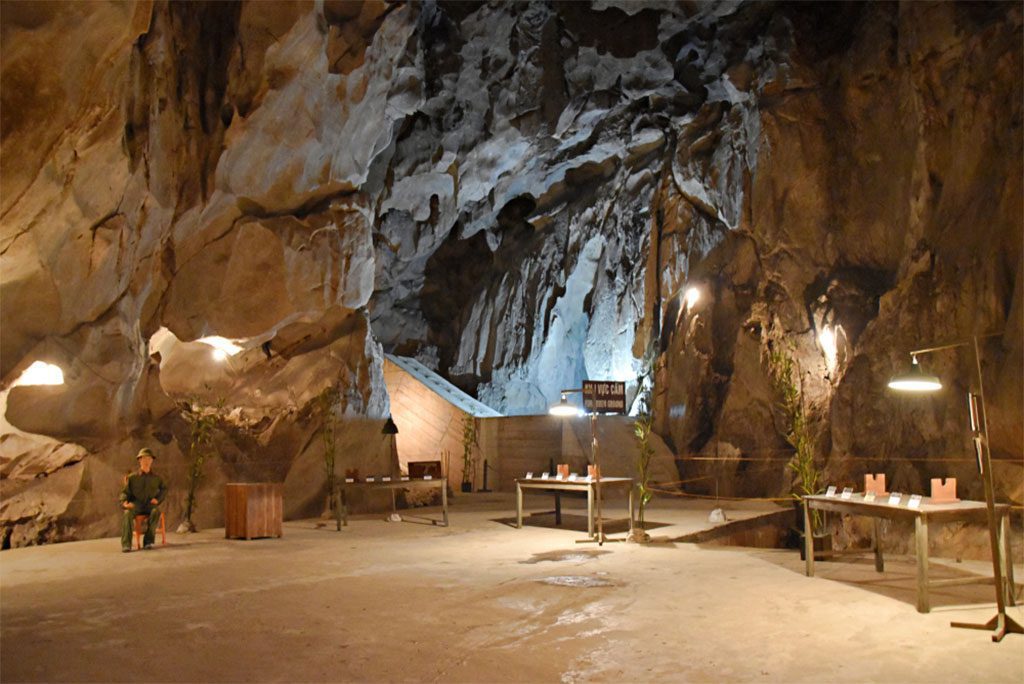
A glimpse into the past at the Old Hospital Cave of Vietnam War on Cat Ba Island. Image source: Happy Auer/Shutterstock.com
Hospital Cave’s enormous interior makes for a breathtaking sight, serving as both a safe haven for Viet Cong commanders and a hospital for the ill and injured during the American War (as the Vietnam War is called in Vietnam).
Incredibly, there was even enough capacity for a swimming pool and a theater to be constructed in the cave between 1963 and 1965, when a total of 17 rooms across three floors were constructed there. Visitors can see the historic operating theater, replete with mannequins and sickbeds, as well as the spectacular architecture and rock formations.
If you want to discover more about the interesting history of Hospital Cave, a guided tour is a must.
9. Ti Top Island
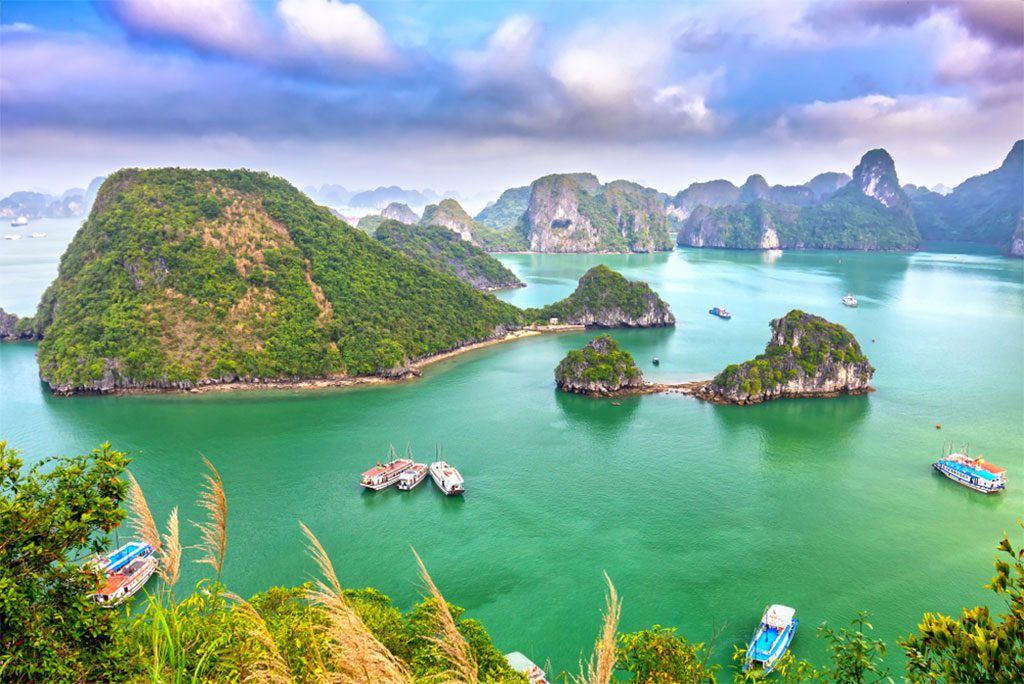
A stunning view of the beautiful landscape of Halong Bay from above Ti Top Island. Image source: Huy Thoai/Shutterstock.com
Ti Top Island, which offers one of the best vantage points in all of Halong Bay, is a popular tourist destination. There is a beautiful crescent-shaped beach there, ideal for lounging, and the waters off of it are great for swimming and snorkeling.
The island, which bears the name of the Russian astronaut Gherman Stephanovic Titov, is well equipped for visitors, with deck chairs, a restaurant, and a bar all available. However, the breathtaking view that awaits you at the island’s peak is the major draw.
Visitors must climb more than 400 steps through the dense forest that covers almost the whole karst to reach the summit of the mountain in its center. From the peak, you can take in a breathtaking panorama of the surrounding area.
8. Dau Go Cave
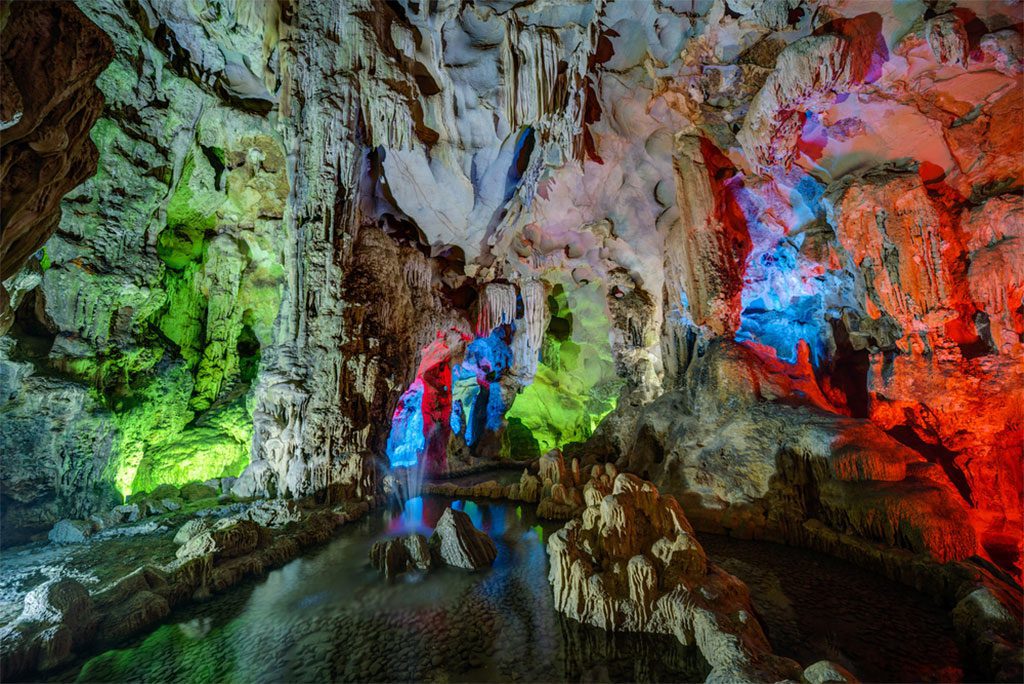
A stunning view of the colorful illumination in Dau Go Cave in Halong Bay. Image source: amadeustx/Shutterstock.com
Dau Go Cave is the biggest of the several caves and grottoes in the area, and its three gigantic chambers are so visually stunning that it is also known as “the Cave of Wonders.”
Vietnamese for “Wooden Stakes,” the name Dau Go comes from the time a commander hid a supply of wooden stakes in the cave to use against the Mongol invasion in 1288. The cave is well lit, making the numerous stalagmites and stalactites stick out of the cave walls like something out of a children’s storybook.
Dau Go Cave and the neighboring Thien Cung Cave are two of the most popular attractions on the namesake island.
7. Cat Ba National Park
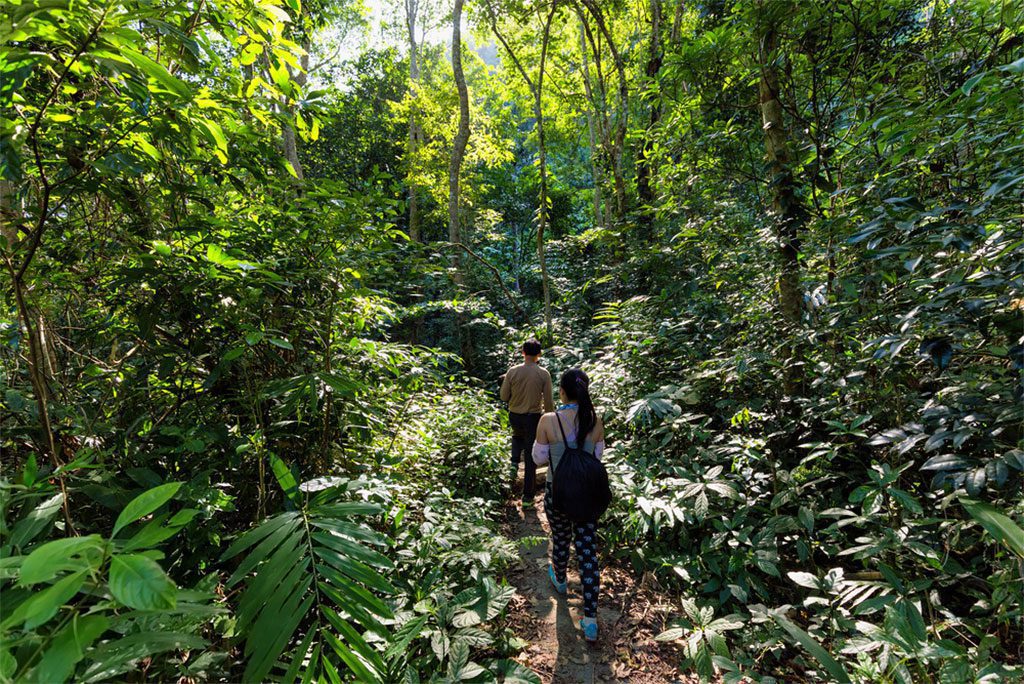
a group of trekkers walking in the dense jungle of Cat Ba Island, Halong Bay, Vietnam. Image source: Stephane Bidouze/Shutterstock.com
Cat Ba National Park, which occupies over half of the island of the same name, is home to a wide range of habitats and landscapes, each more stunning than the last. With a wide variety of habitats, from karst mountains and lush forests to mangroves and marine waters, this area is home to over 1,500 various types of flora and fauna.
The golden-headed langur, one of the world’s most critically endangered primates, is only one of the 160 bird species and 20 types of animals you could see there.
Hiking in the park is a wonderful experience, and if you want to understand more about the magnificent scenery you’ll see, it’s definitely worth your while to hire a guide.
6. Cua Van Floating Village
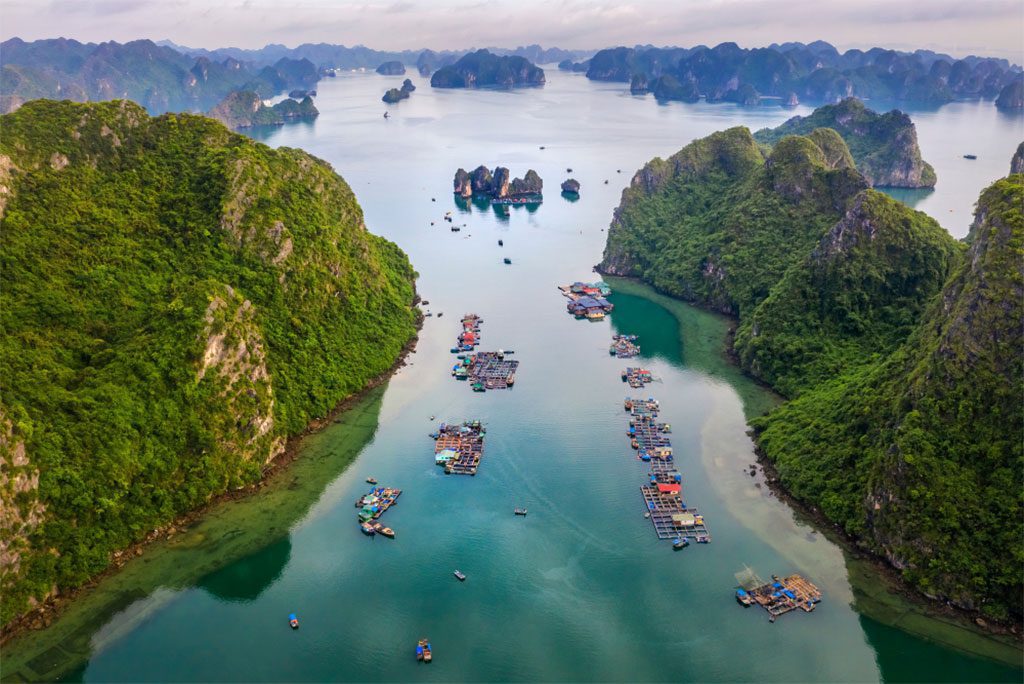
Cua Van floating fishing village and a rock island in Halong Bay, Vietnam. Image source: Nguyen Quang Ngoc Tonkin/Shutterstock.com
Cua Van is an incredible destination since its residents live in houses that float on the water. Because of this, they’ve established a culture of their own. Young children begin swimming lessons before they even manage to walk, and it’s not uncommon to see them navigating small boats or kayaks with ease between neighboring houses.
Cua Van, being one of the remaining fishing villages in Halong Bay, is very photogenic due to its location within a stunning landscape of limestone islands and forested islets. Travelers can do more than just take in the unique scenery; they can also get an education in the fishing, net-making, and net-repairing practices of the locals.
5. Lan Ha Bay
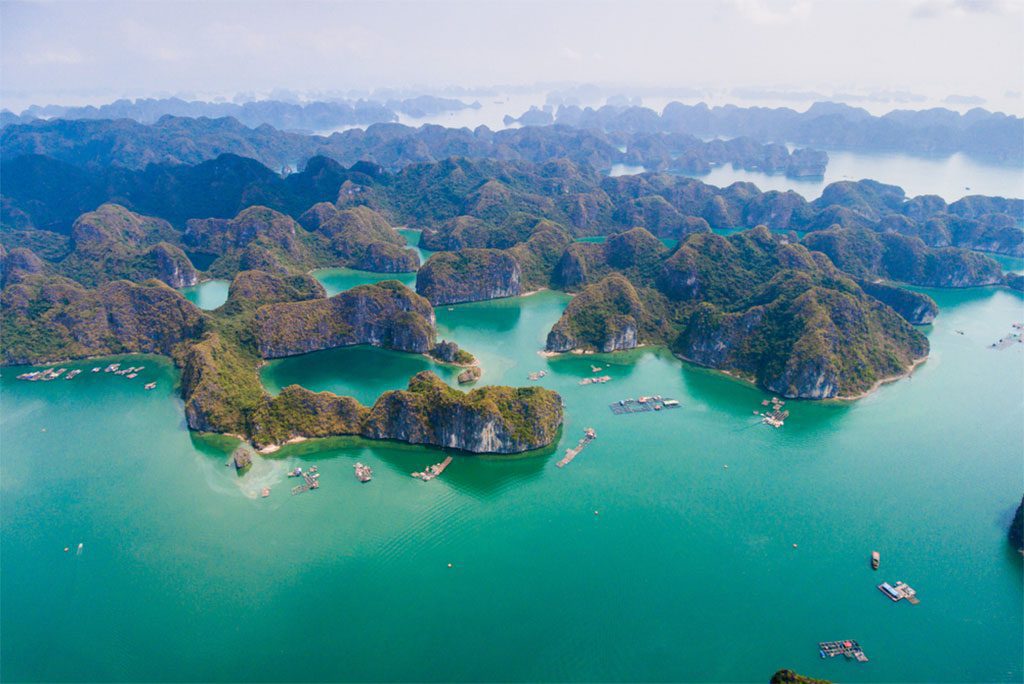
This stunning aerial view shows the beautiful Lan Ha Bay in Hai Phong, Vietnam. Image source: Jimmy Tran/Shutterstock.com
Lan Ha Bay, located between Cat Ba Island’s southern and eastern shores, is equally as beautiful as Halong Bay, but it’s far less crowded and noisy.
Over 300 karst islands and islets make up the bay, which is home to beautiful white-sand beaches and a wide variety of water activities. Hidden within the breathtaking landscape are a few floating villages, such as Cai Beo.
To really appreciate all the features of Lan Ha Bay, a sailing tour is a necessity. Explore the islands via rock climbing, snorkeling, scuba diving, or paddling a kayak, all while taking in the stunning scenery.
4. Dong Thien Cung
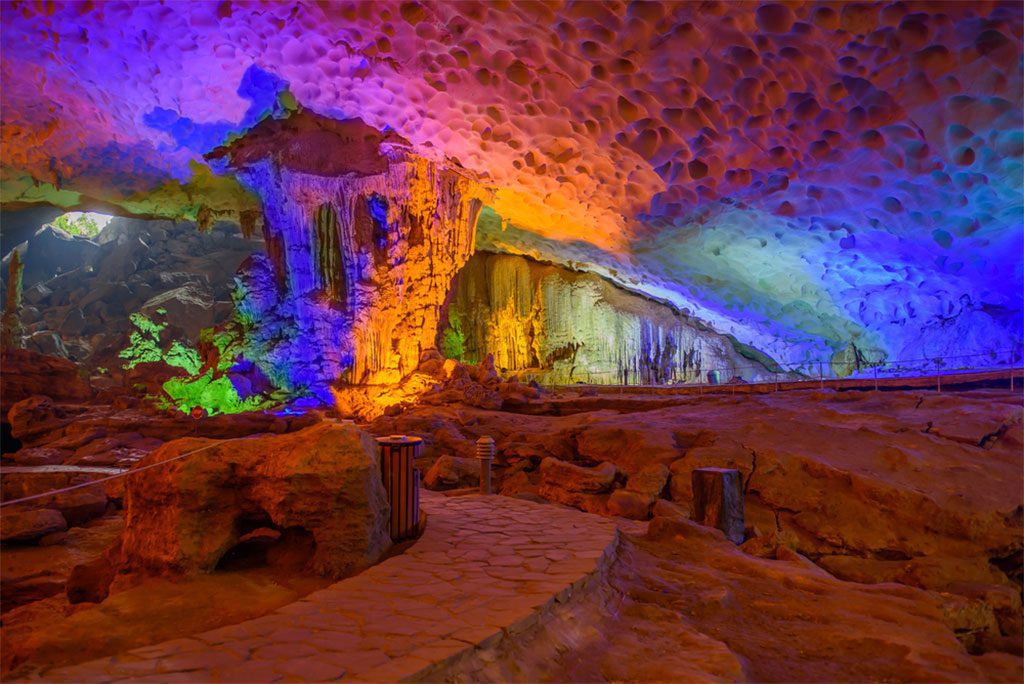
This image shows the stunning Thien Cung Grotto in Halong Bay, Vietnam. Image source: gg-foto/Shutterstock.com
Only a short distance from the stunning Dau Go Cave, the similarly impressive Dong Thien Cung Cave has even more impressive stalactites and stalagmites. Visitors must make their way through thick forest along a winding road to the cave’s entrance.
There, among the tumbling and twisting rock formations, one could easily believe that the dragon king and queen once called this place home.
Dong Thien Cung is a unique destination, and its location on Dao Go Island, or “the Island of Wonders,” as it is called in French, is only fitting. The scenery of Halong Bay is breathtaking from the cave’s opening.
3. Cannon Fort (Cat Ba Island)
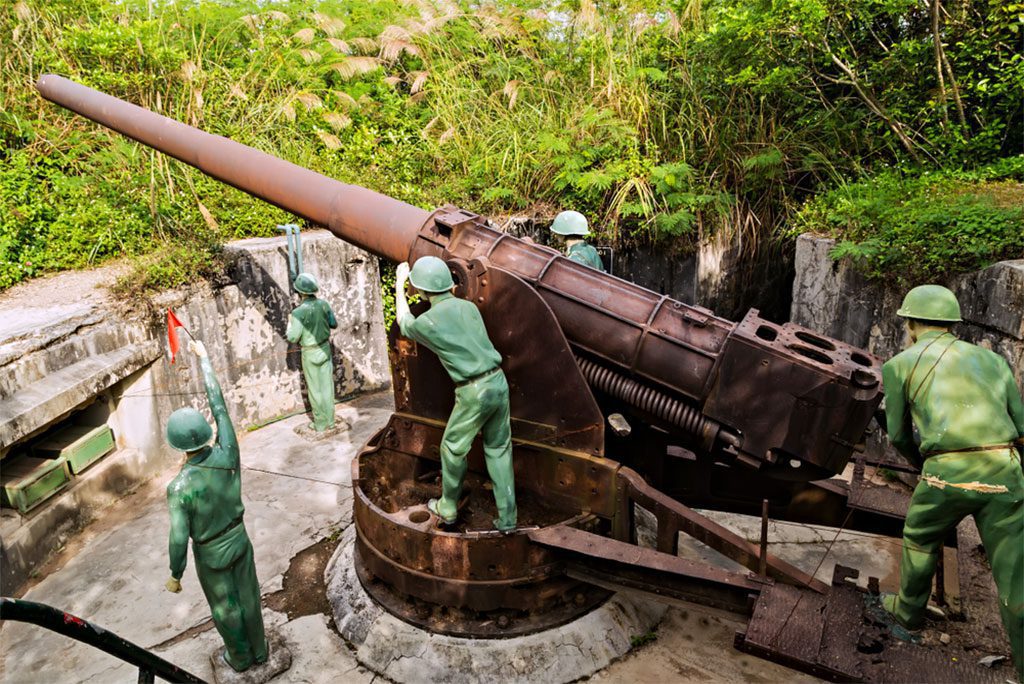
A view of Cannon Fort on Cat Ba Island, overlooking Lan Ha Bay in Vietnam. Image source: VladyslaV Travel photo/Shutterstock.com
If you’re looking for a breathtaking panorama, go no farther than Cannon Fort on Cat Ba Island’s southern coast. All around the shimmering waters, jungle-covered hills and islands dot the horizon, and little villages and fishing boats can be seen from the safety of the fort.
Visitors can take in one of the best views in the country while also exploring the maze of tunnels that lie under the fort and learning about its fascinating history in the museum.
Cannon Fort was built by the Japanese during WWII, and it was later utilized by the French and the Vietnamese. Toy soldier-style mannequins now occupy the massive gun emplacements, demonstrating how they would have looked in their time.
2. Bai Tu Long Bay
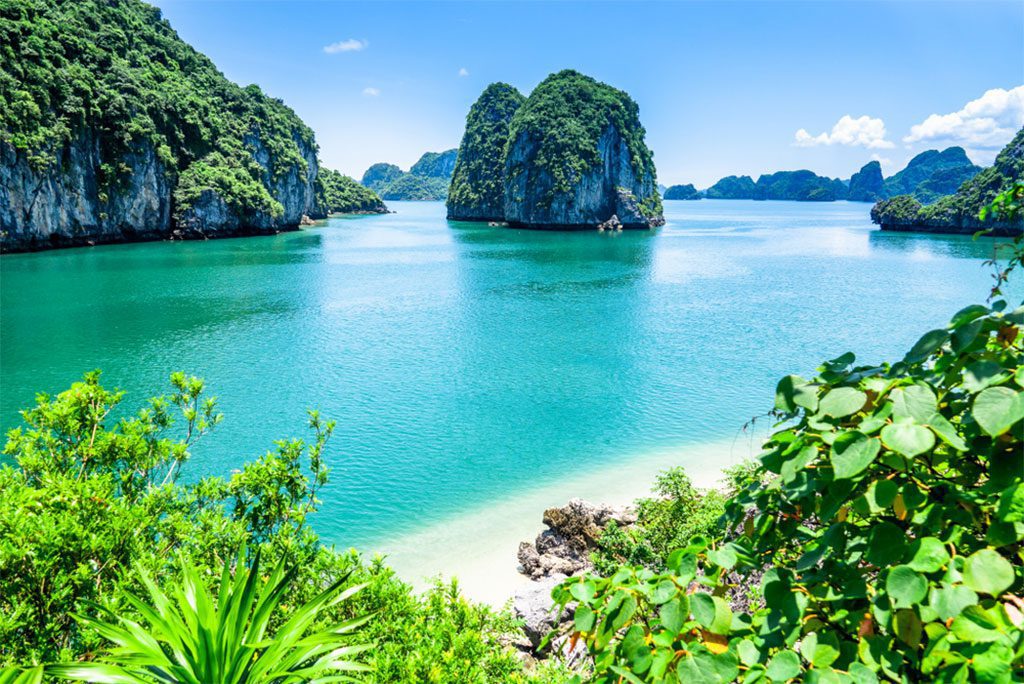
This photo showcases the stunning view of Bai Tu Long Bay in Vietnam. Image source: Jeroen Mikkers/Shutterstock.com
Bai Tu Long Bay is one of Halong Bay’s less-visited destinations because of its remote eastern location. Therefore, it is ideal for those seeking a unique adventure. Beautiful beaches, spectacular caverns, and secluded villages await you in this lesser-known alternative to Halong Bay, where you can go hiking, snorkeling, and rock climbing.
As a result of its isolation, the region’s natural beauty remains undisturbed and unspoiled, and the sea is studded with gorgeous, jungle-covered karst islands. A voyage around them would be a once-in-a-lifetime adventure for everyone.
1. Sung Sot Cave
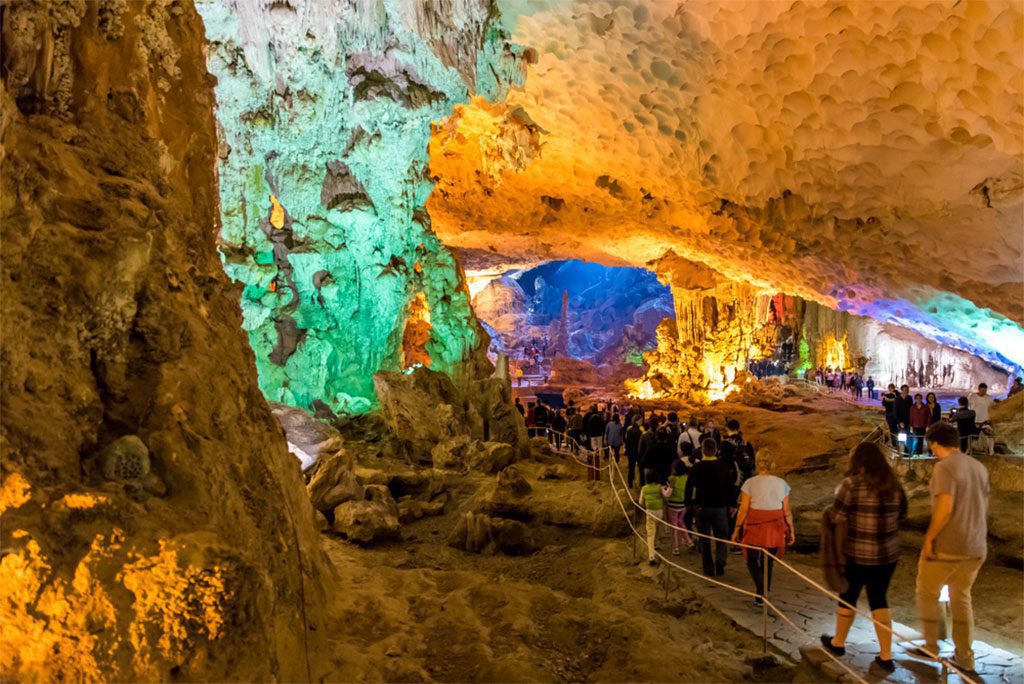
This photo showcases the stunning Sung Sot Cave in Halong Bay, Vietnam. Image source: Simon Dannhauer/Shutterstock.com
Sung Sot Cave is one of the most visited spots in Halong Bay, and for good reason: the impressive rock formations within make it a must-see. The cave was discovered in 1901 by the French and is situated on Bo Hon Island. To get to the entrance of the cave, tourists must first climb a lengthy set of stairs.
Wait a while to soak in the breathtaking panorama of Halong Bay or explore the cave system inside. The cave’s three enormous chambers and the stunning lighting create a mesmerizing spectacle, and the bizarre rock formations add to the sense of otherworldliness.


